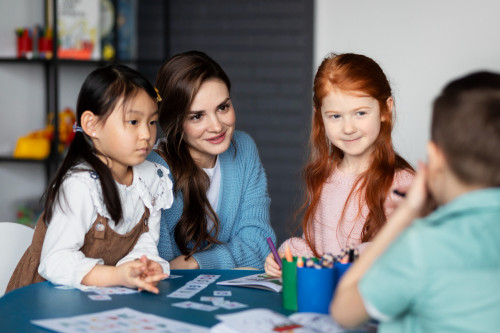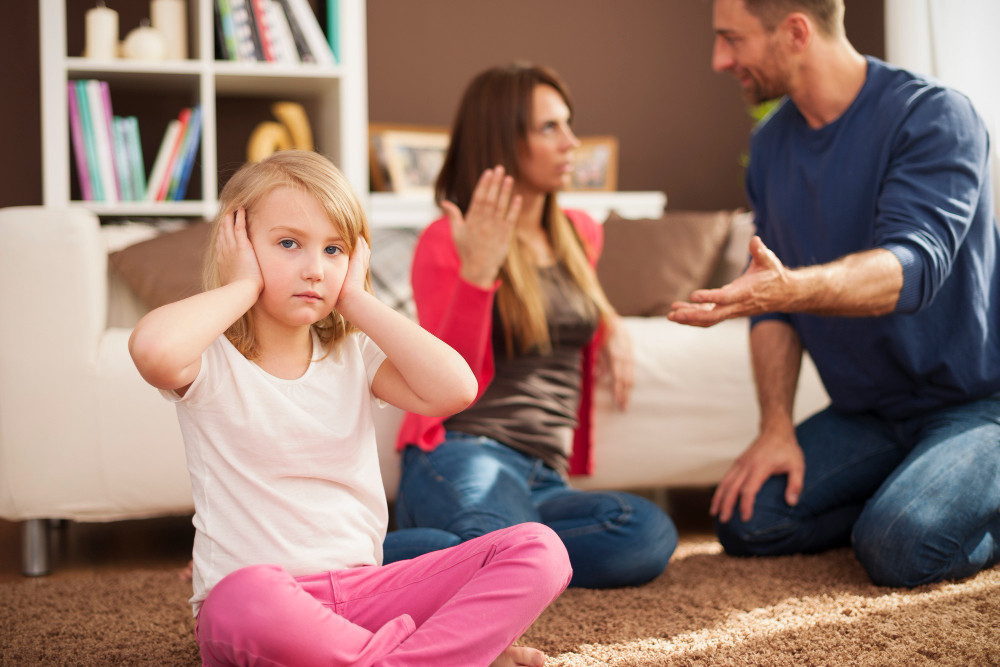
Effective Strategies for Encouraging Children to Cooperate and Listen
Introduction
As a parent or educator, one of the biggest challenges I've faced is getting children to cooperate and listen. It's easy to feel frustrated when it seems like every request or instruction is met with resistance, or when their attention seems to be anywhere but where it needs to be. But I’ve learned that cooperation and listening are skills—ones that can be taught and encouraged with the right approach.
Children are naturally curious, and sometimes their reluctance to follow instructions or cooperate comes from a desire to assert their independence, test boundaries, or simply because they’re distracted by other things. This is completely normal! What I’ve discovered is that fostering cooperation doesn’t come from demanding obedience, but from building a relationship of mutual respect and understanding.
In this article, I’ll share what I’ve learned about why children may struggle to cooperate and listen, and I’ll explore some practical strategies that have helped me—and can help you too—create a more positive, cooperative environment for kids. Whether you’re a parent, teacher, or caregiver, these tips can make a big difference in your daily interactions with children.
Understanding the Root Causes of Resistance
When I first started noticing resistance from children—whether it was refusing to follow instructions or tuning out when I was talking—I initially thought it was just them being difficult. But after looking deeper, I realized there are often underlying reasons for their behavior that go beyond simple defiance.
Developmental factors play a huge role. Children, depending on their age, are still developing their cognitive abilities, self-control, and emotional regulation. I had to remind myself that younger children, especially, may not fully understand complex instructions or the importance of cooperating in a given moment. Their attention spans are shorter, and they can easily get distracted by something more interesting than what I'm asking them to do.
Emotional needs also influence their behavior. I found that when a child felt unheard, overwhelmed, or upset, they were much more likely to resist cooperating. They weren’t necessarily trying to be difficult, but rather expressing emotions that they didn’t know how to handle. For example, if they felt stressed or tired, they might push back against even the simplest requests. Understanding this helped me to be more patient and empathize with what they were going through.
I also had to consider environmental influences. Children are highly sensitive to their surroundings. A chaotic or stressful environment can make it harder for them to focus and cooperate. If there’s a lot of noise, distractions, or tension in the household or classroom, it's likely to affect how they respond to instructions.
By understanding these root causes—whether it's developmental limitations, emotional stress, or environmental factors—I’ve learned to approach resistance not as a challenge to my authority, but as a signal that something else might be going on. This shift in perspective allowed me to address the core issues and help children become more cooperative and engaged.
Building a Positive Relationship
Building a positive relationship with children has been one of the most important things I’ve focused on when trying to encourage cooperation and listening. Early on, I realized that children are much more likely to respond well when they feel connected to the adult giving the instruction. Instead of relying on authority alone, I started focusing on developing a sense of mutual trust and respect.
One thing that made a big difference for me was establishing trust. I found that children need to know that they’re not just being told what to do, but that their feelings and opinions matter too. When I began actively listening to them and really paying attention to their thoughts and concerns, I noticed a huge shift. They started to trust me more, and as a result, they were more willing to cooperate.
Another key part of this was modeling good listening myself. I realized that if I wanted them to listen to me, I had to show them what good listening looked like. That meant being fully present when they were speaking, making eye contact, and responding in ways that made them feel heard. Once I demonstrated that I respected their voice, they began to mirror that behavior back.
I also learned the importance of connection before correction. If a child wasn’t cooperating, rather than jumping straight to discipline or correction, I tried to first make an emotional connection. Whether it was a quick hug, a moment of shared laughter, or just showing empathy for their feelings, these small gestures helped build a bond. I found that when children felt emotionally secure, they were much more open to cooperation and less likely to resist.
In the end, building a positive relationship wasn’t just about getting children to listen—it was about creating a healthy, supportive environment where they felt valued and understood. This made cooperation feel more like a partnership rather than a battle of wills.
Effective Communication Strategies
When it comes to getting children to cooperate and listen, I realized that how I communicate with them makes all the difference. At first, I wasn’t always clear or consistent with my instructions, which led to confusion and frustration—for both me and the kids. Over time, I learned some simple but effective communication strategies that have really helped.
First, I learned the value of giving clear and direct instructions. Children, especially younger ones, respond much better when instructions are simple, specific, and easy to understand. Instead of saying something vague like, “Be good,” I started giving more direct commands like, “Please put your toys in the basket.” This helped eliminate any ambiguity, and I noticed that kids were much more likely to follow through when they knew exactly what was expected of them.
Another thing that made a big difference was using positive language. Early on, I would often phrase things negatively, like, “Don’t run in the house,” or “Stop being noisy.” What I found more effective, though, was telling them what I wanted them to do instead of what I didn’t want. So instead of “Don’t run,” I started saying, “Please walk inside,” and instead of “Stop being noisy,” I’d say, “Let’s use our quiet voices.” This shift in phrasing made the instructions feel less like a restriction and more like a helpful guide.
I also began to offer choices, which helped children feel like they had some control over the situation. For example, if they were resisting doing their homework, instead of pushing them to do it immediately, I’d ask, “Would you like to do your homework now or after a snack?” This small bit of decision-making power often made them more cooperative because they felt involved in the process rather than just being told what to do.
Finally, I found that tone and body language played a significant role in communication. Kids are incredibly perceptive and can pick up on frustration or impatience even when I didn’t mean to show it. I made a conscious effort to stay calm, use a gentle tone, and get down to their eye level when speaking to them. This non-verbal communication helped build trust and made them more likely to listen without feeling like they were being scolded.
Using these communication strategies has not only improved cooperation but has also helped create a more respectful and positive environment. It reminded me that sometimes, how we say things is just as important as what we say.
Consistency and Routine
When I first started trying to create a cooperative and calm environment for children, I noticed that one of the key things that made a difference was consistency and routine. At first, I didn’t fully understand just how much kids rely on structure to feel secure and know what’s expected of them. Over time, though, I realized that when I was consistent in my approach and established predictable routines, everything seemed to flow more smoothly.
For me, consistency meant that I had to stick to the rules and expectations I set. If I allowed a behavior one day and then tried to correct it the next, it created confusion and made it harder for the children to understand what was expected. So, I made a point of being clear and consistent with boundaries, whether it was about bedtime routines or completing homework. This helped the children know exactly what to expect and removed a lot of the pushback I used to get.
Similarly, routines played a big role in creating a sense of stability. I noticed that when the children knew their daily routine—like when they’d have breakfast, playtime, and when it was time to do their homework—they were much more cooperative. It reduced the need for constant reminders or negotiations, and they naturally started transitioning from one activity to the next without much resistance.
Of course, I also found that flexibility within the routine was important. Life happens, and there are always days when things don’t go according to plan. But having a basic structure in place allowed me to return to that routine quickly, which helped maintain a sense of normalcy for the children.
I learned that predictability is comforting to children. When they know what’s coming next, it reduces anxiety and helps them feel more in control. Plus, it gave me more confidence in managing daily tasks and reduced the chaos I sometimes felt.
Overall, consistency and routine became two of my most reliable tools for encouraging cooperation. By sticking to them, I saw a big improvement in how well children listened and followed through on tasks. They began to thrive in the structure, and it made our interactions much smoother and more positive.
Incorporating Play and Fun
One of the best things I learned while trying to get children to cooperate is that incorporating play and fun into daily tasks makes a world of difference. Early on, I was focused on being efficient and getting things done, but I quickly realized that when I made things feel like a game or an adventure, the children were much more engaged and willing to participate.
For example, instead of asking them to clean up toys in a serious tone, I started turning it into a game: “Let’s see how fast we can clean up and beat the clock!” Suddenly, what used to be a struggle became something they were excited about. They’d race to tidy up because it felt fun rather than like a chore. This playful approach completely transformed how they responded to daily tasks.
I also started using imagination to get them on board with activities they might not usually enjoy. For instance, when it was time for homework or reading, I’d say something like, “Let’s pretend we’re detectives and need to solve a mystery by finding the answers in this book!” Just by adding a bit of storytelling, the children would approach the task with more enthusiasm, seeing it as part of a game.
Incorporating play is also a great way to reduce power struggles. I noticed that when kids felt like they had some control, even within the playful context, they were more cooperative. For example, turning something into a role-playing activity—like pretending to be superheroes while doing an activity—allowed them to feel involved while still getting the task done.
I also found that making tasks physically interactive helped. Kids naturally have a lot of energy, and instead of asking them to sit still and focus, I found ways to make learning or tasks more hands-on. Whether it was using blocks to teach math or turning instructions into a treasure hunt around the house, adding movement kept them engaged and made them more likely to cooperate.
Using play and fun not only made everyday tasks more enjoyable for the kids but also strengthened our relationship. It reminded me that learning and cooperation don’t have to be serious all the time—kids thrive when they’re having fun, and incorporating that into our routines made life a lot easier for everyone.
Positive Reinforcement and Praise
When I first started working with children, I quickly realized the power of positive reinforcement and praise. Early on, I would often focus on correcting misbehavior, thinking that pointing out what was wrong would teach them to behave better. But over time, I discovered that acknowledging and rewarding good behavior had a far greater impact on encouraging cooperation and positive attitudes.
One of the first things I learned was to focus on the effort, not just the outcome. For example, instead of only praising a child when they got a perfect score on a test, I started praising the hard work they put into studying or how they stayed focused during homework time. Saying something like, "I can see you worked really hard on that!" helped the children feel proud of their efforts, and it motivated them to keep trying, even if they didn't always succeed right away.
I also realized that immediate praise was crucial. When a child listened, followed through with a task, or showed good behavior, I made sure to recognize it right then and there. The quicker the praise, the more connected it was to the behavior, and the more likely they were to repeat it. It could be as simple as saying, "Thank you for picking up your toys so quickly!" or "Great job sharing with your friends!" That little bit of positive feedback reinforced that they were on the right track.
Reward systems also helped a lot. I used things like sticker charts or small rewards for consistent good behavior. For instance, if a child completed their chores for the week without reminders, they could choose a fun activity or earn extra playtime. These little incentives motivated them to stay on top of their responsibilities. What I found, though, is that rewards don’t always have to be material things—sometimes, just extra praise or spending quality time together was enough to make them feel appreciated.
I also learned to praise specifics rather than generalizing. Instead of just saying “good job,” I’d try to be specific, like “I love how carefully you cleaned up your room today!” This made the praise feel more meaningful and helped the children understand exactly what behavior I was proud of, so they knew what to repeat in the future.
Positive reinforcement and praise taught me that children respond so much better when they feel encouraged and recognized. It shifted my approach from focusing on what they were doing wrong to celebrating what they were doing right, and it created a much more cooperative and positive atmosphere for all of us.
Empathy and Emotional Understanding
When it comes to fostering cooperation and good listening in children, I’ve learned that empathy and emotional understanding are key. Early on, I used to get frustrated when children acted out or resisted instructions, thinking they were just being difficult. But once I began to look at their behavior through an empathetic lens, everything changed. I realized that their resistance was often tied to their emotions, and by understanding those emotions, I could respond in a way that made them feel heard and respected.
For instance, I began to recognize that children often act out when they feel overwhelmed, frustrated, or misunderstood. Instead of reacting to the behavior itself, I tried to get to the root of what was going on emotionally. If a child was having a meltdown over a seemingly small issue, I learned to stop and ask myself, “What are they really feeling right now?” Maybe they were tired, anxious, or upset about something unrelated. Taking the time to acknowledge their feelings made a huge difference.
One of the most powerful things I started doing was validating their emotions. If a child was upset, instead of telling them to “calm down” or dismissing their feelings, I would say something like, “I see that you’re really frustrated right now. It’s okay to feel that way.” Simply acknowledging their emotions made them feel understood, which often helped them calm down on their own. It also showed them that their feelings mattered, which built trust and made them more likely to cooperate in the future.
I also found that teaching emotional regulation was important. Children don’t always know how to handle big emotions like anger or sadness, and part of my role became helping them understand and manage those feelings. I’d use simple phrases like, “Let’s take a deep breath together,” or “Can you tell me what’s making you upset?” By helping them express their emotions in a healthy way, I noticed that they were less likely to act out or resist instructions.
Empathy also meant putting myself in their shoes. Sometimes, I would ask myself, “How would I feel if I were in their situation?” This helped me soften my approach and be more patient. For example, if a child was refusing to do homework, instead of getting frustrated, I’d think about how overwhelming schoolwork can feel for a young child. This perspective shift allowed me to approach the situation with more kindness and offer support rather than just pushing them to comply.
In the end, practicing empathy and emotional understanding not only helped improve cooperation but also strengthened my relationship with the children. They began to see me as someone who understood and respected their feelings, which made them more open to listening and working together. It reminded me that sometimes, just acknowledging a child’s emotions can be the first step toward solving any challenge.
Problem-Solving Together
When I started involving children in problem-solving, it became one of the most effective ways to encourage cooperation and help them feel more empowered. Initially, I would try to solve problems for them—whether it was managing conflicts with peers, figuring out how to complete a task, or dealing with frustration. But over time, I realized that if I included them in the process, it not only helped them feel more in control but also taught them valuable skills for handling challenges on their own.
One thing I began doing was asking for their input whenever we faced an issue. Instead of jumping in with a solution, I would say, “What do you think we could do to fix this?” or “How can we make sure this doesn’t happen next time?” By asking open-ended questions, I encouraged them to think critically about the situation and come up with possible solutions. This shift in approach helped them feel respected and capable, which made them more likely to cooperate and engage in the problem-solving process.
Sometimes, I noticed that children felt overwhelmed by big problems, so I helped them break things down into smaller, manageable steps. If we were dealing with an issue like organizing their toys or handling schoolwork, I’d say, “Let’s figure this out together. What’s the first thing we should do?” By simplifying the problem, it made it feel less daunting, and the children were more willing to participate. As we worked through each step, I made sure to praise their efforts, reinforcing the idea that they were capable of solving problems on their own.
Another technique that worked well was offering choices during problem-solving. For example, if a child was upset because they didn’t want to clean up their toys, I’d ask, “Would you like to start with the blocks or the cars first?” Giving them options helped them feel more in control of the situation, which made them more cooperative and less resistant. It also taught them that even in situations where they might not have full control, there’s always room to make choices and find solutions.
Collaborating on solutions also built a stronger relationship between us. Instead of me being the authority figure who imposed rules or solutions, we became a team working together to solve a problem. This partnership approach not only made the children more cooperative but also encouraged them to trust me more and come to me when they faced challenges on their own.
By problem solving together, I found that the children became more independent, confident, and capable. It also made our daily interactions smoother, as they learned that they could play an active role in overcoming difficulties. Ultimately, this approach fostered both cooperation and a sense of shared responsibility, which benefited everyone involved.
Conclusion
In conclusion, making children more cooperative and attentive involves a combination of understanding, patience, and strategic guidance. By focusing on the root causes of resistance, building positive relationships, and using effective communication strategies, I’ve seen significant improvements in how children respond. Consistency and routine create a sense of security, while incorporating play and fun makes tasks more engaging. Positive reinforcement and praise encourage good behavior, and showing empathy helps children feel understood. Involving them in problem-solving empowers them, and addressing their needs ensures that every child receives the support they deserve.
Ultimately, cooperation and listening are not about forcing compliance but about creating a nurturing, understanding environment where children feel heard, respected, and motivated to participate. By adopting these approaches, we can help children develop important life skills, build stronger connections, and create more peaceful, cooperative relationships.







